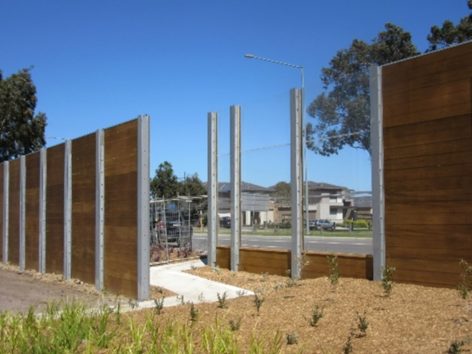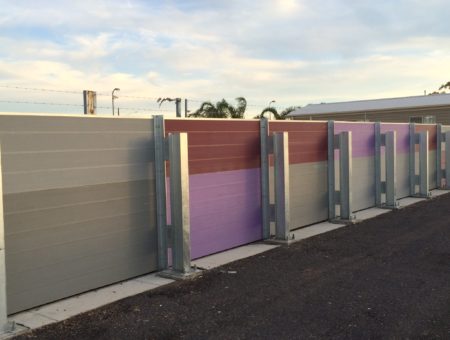You may often drive down a Melbourne freeway, but have you ever paid much attention to the large commercial walls assembled along them? These are known as noise walls or acoustic walls, and they are there to reduce the penetrating traffic sounds which may impact residential and industrial areas. As our population grows, so too has noise pollution, specifically from traffic. Constant noise pollution can be a cause for concern. However, successful demonstration of noise wall technology has changed the future of freeway design.
The concept of an acoustic wall is actually very simple. Noise walls work by, instead of attempting to block the sound or bounce it to a less populated area, noise dampening materials diffuse and absorb much of the unwanted sound.
Such sound-absorptive panels “kill” the noise by making the sound wave use up its energy as it passes through strategic openings in the wall.
Absorptive panels are pre-engineered and easily customized for each site and application. Noise walls designed with the best materials have a protective UV coating and will not rust, rot, or deteriorate in extreme temperatures.
Since noise walls use lightweight materials, they work extremely well for areas with weight restrictions.
Such innovations ensure freeway sound walls reduce sound levels and provide a cost-effective solution to highway noise pollution. There are many different material options available however with a growing focus on sustainability and environmental impact, Lee Group are excited with a new noise wall design using up to 70% recycled plastic, and FEA tested for wind speeds:
The design is adaptable to suit a variety of budgets, acoustical needs and desired project outcomes.
Quick facts!
– Old plastic products are collected and recycled locally at their end of life
– The latest research shows that the products can be recycled at least 7 times before they need assistance with processing.
Benefits include
– 100% Recyclable Australian made LLDPE
– Available in a variety of colours (inc translucent)
– Special effects include stone, rust, marble and more
– Surface density 15kg/m2 (can be developed heavier or lighter)
– Impact-resistant, long-term performance without maintenance
– UV stable
– Graffiti resistant and easy to clean
Acoustic fencing and noise walls are pivotal in providing protection from noise pollution. With the density of residential development, the increasing need to provide high quality and effective noise reduction measures has never been higher.
Project Flashback
Project – Noise wall along Dandenong bypass and residential suburb
Engaged by – LDC Consulting
Designed by – Lee Group and consulting engineers
Project purpose – to prevent Dandenong Bypass road traffic noise
into nearby residential homes
Outcome – The design incorporated Perspex screen to allow natural light and prevent visual barriers for pedestrians safety access whilst
ensuring noise reduction requirements are achieved.
Materials – Perspex and VicRoads approved Acoustic
timber ply.



